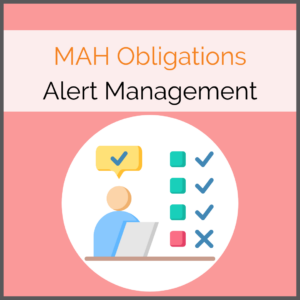
With the go-live of the EU-FMD and the first scans in pharmacies, high numbers of error messages did arrive. Analyzing these alerts and reporting them back to the EMVO is the responsibility of the pharmaceutical manufacturers (MAH) and the national authorities. However, for a long time, the authorities and the MAHs ignored the error reports. Selected processing was widely accepted. Read on to find out why the authorities’ approach is currently changing.
The number of alerts was particularly high due to scanning errors at the beginning. But even today, pharmacies still make handling errors. For example, if the scanner is not set correctly and converts all upper-case letters to lower-case letters. This has also led to the fact that there is currently a large discrepancy between the official requirements and actual practice between the authorities and MAHs. Due to the lack of options for adequately processing large volumes of alerts and reporting them back to the authorities, alert management has not yet been prioritized by either the authorities or the MAHs. The diversified landscape of options provided by the NMVOs also contributes to this practice.
The legal basis for alert management
An MAH’s obligation to actively manage alerts comes from the obligations of the NMVOs. According to the “EU-FMD Delegated Regulation 2016/161, Article 37”, NMVOs are obliged, among other things, to monitor incoming alerts. They must also ensure that the error messages are investigated and reported to the relevant bodies (NCA, EMA, EU Commission) if a suspicion of falsification is confirmed. As the NMVOs cannot fulfill these obligations themselves, they have been delegated to the MAH.
The best practice document of the EMVO “EMVO-00306 BEST PRACTICE ON ALERT HANDLING V2.0 21/06/202” refers to the Delegated Regulation and explains that the NMVOs can delegate the obligations to the end users, i.e. the MAHs and pharmacies.
Based on the legal texts described above, it is clear that alert management is a fundamental building block of serialization. EMVO- and GXP-compliant completion of the serialization process is only achieved by processing the final alerts. Only then is the process fully completed.
The EAMS and its consequences for alert management
The requirements of the NMVOs were and are not standardized. This applies, for example, to the processing deadlines for alerts. In Spain, a deadline of 24 hours applies, while in Austria, alerts must be processed and canceled or escalated to the authorities within three days. The options for reporting and processing alerts have also not been standardized to date. In addition to the EMVO Gateway Melior Solutions, there are national alert management portals, email notifications, or direct contact with the authorities by telephone – always depending on the national requirements of the authorities. The situation has now changed thanks to EMVO’s standardized and structured alert management portal, the Alert Management System (EAMS).
Essential functions are provided by the EAMS that the MAHs need to fulfill their obligations. The “grace period” granted by the authorities is, therefore over. NMVOs and MAHs must now fulfill their obligations in full. The EMVO’s Alert Management System provides all the options for comprehensive alert processing. The AMS creates a central location where all alerts converge, with additional functions such as
- mass processing
- various filter options
- alert status display
- display of how much processing time is left
What do MAHs need to do now?
The NMVOs are now fulfilling their obligations and make authorization holders accountable. For MAHs, it means that they should review their initial situation and take appropriate measures from there. Including, for example, reviewing all processes related to alert management. In addition, the new opportunities arising from the AMS should be explored. To give you an example: If an MAH previously relied primarily on direct notification by email, it is worth registering once in the free EAMS to find out the actual number of alerts for the company in question. These can be far higher than previously assumed. Once the first two steps have been taken, the actual alert management can be tackled:
- Start active management of alerts
- Establish a process for the timely investigation of alerts (
- Continuously reduce the volume of alerts (active cooperation with the NMVOs)
We generally recommend finding a long-term solution for alert management. To ensure complete compliance, it should be clear who processes the error messages if the person responsible is unavailable, how selective peaks in alert volumes can be intercepted, and how the issue of documentation is dealt with.
Tracekey will be happy to support you with your alert management.